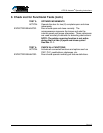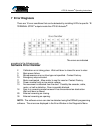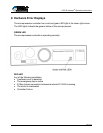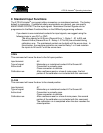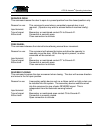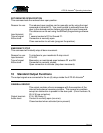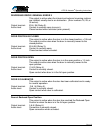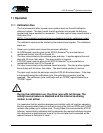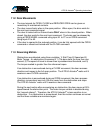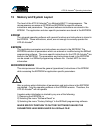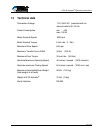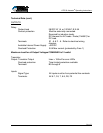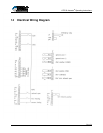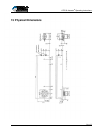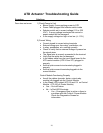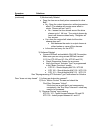
ATD 50 Actuator
®
Operating Instructions
Page 20
3811 N. Holton Street • Milwaukee, WI • 53212 •USA • Phone • 414-906-4000 • Fax 414-906-4100 • www.MPCovers.com
11.2 Door Movements
• The input signals for OPEN, CLOSE and REDUCED OPEN can be given as
momentary or maintained contacts.
• The door moves freely when in the open position. When open, the drive waits for
the next input command signal.
• The door is locked with an internal brake ONLY when in the closed position. When
closed, the door waits for the next input command. The brake can be released by
giving a FREE WHEEL command using input A1 to C7 or an OPEN command
using input A1 to A2.
• If the door is opened to the reduced position, it can be fully opened with the OPEN
command or closed and locked with the CLOSE command.
11.3 Reversing Motion
Obstructions are detected using three variables: 1) Stall Time 2) Speed and 3)
Motor Torque. An obstruction is assumed if 1) The door stalls for more then one
second, 2) The speed of travel is slower than a predetermined threshold, and 3)
The torque needed is greater than the reference torque.
If an obstruction is encountered during a CLOSE movement, the door reverses
direction and moves to the full open position. The ATD 50 Actuator
®
waits until it
receives a new CLOSE command.
If an obstruction is encountered during an OPEN movement, the door reverses
direction, moves about one inch (25 mm) away from the obstruction and stops.
The ATD 50 Actuator¨ waits until it receives a new command.
During the next motion after encountering an obstruction, the door moves at 50%
speed toward the obstruction point. The motor torque variable is disabled during
this “second attempt”. Therefore, the ATD 50 Actuator
®
is less sensitive to an
obstruction. If no obstruction is encountered, then the motion continues as normal
and the three variables are monitored again.



